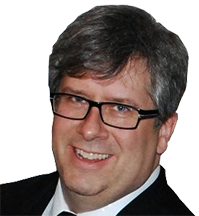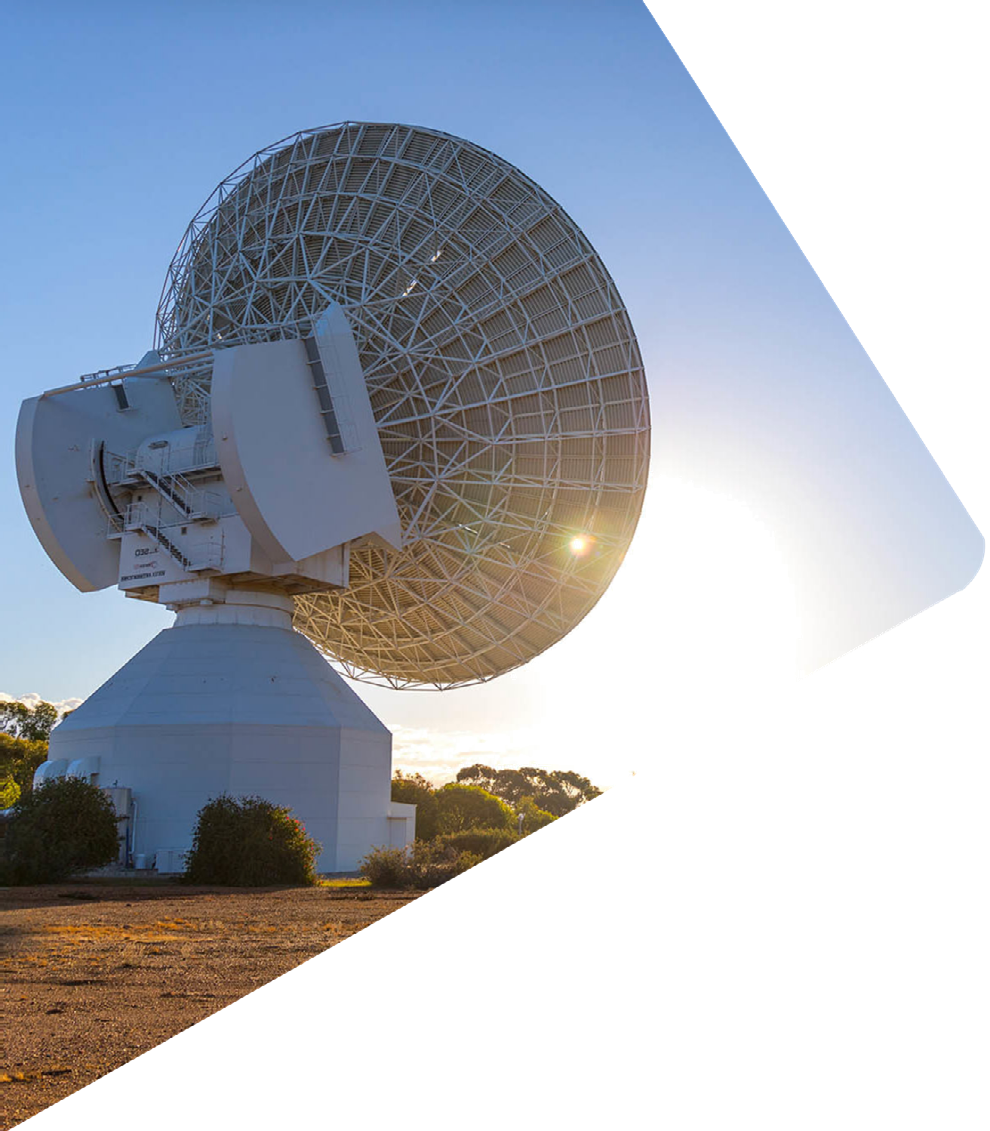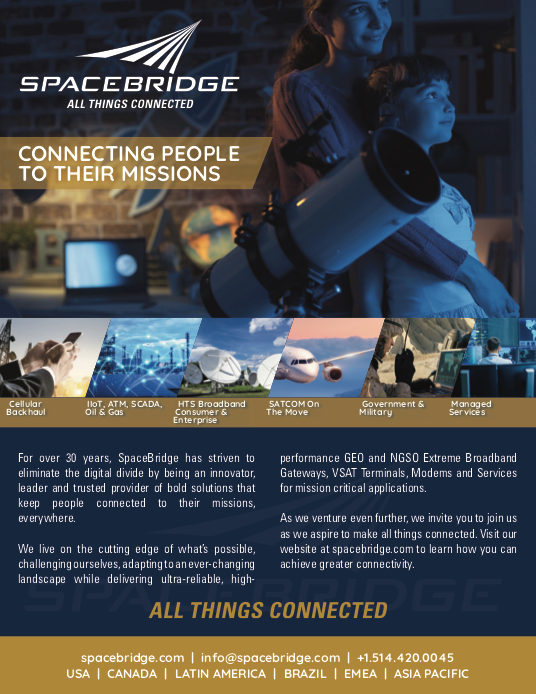Mr. Patrick Thera joined Advanced Technologies in 1985 after completing an honors degree in Computer Science at the University of Saskatchewan. SED became a part of Calian in 1990. Throughout his extensive career within the organization, it was the variety of technical challenges, the commitment to our customers, and the opportunity for worldwide travel that spurred him to grow in his career.

Starting as a software developer on Canada’s Search and Rescue Satellite Aided Tracking program, he quickly realized the importance of the work we do in this organization and its potential for growth. After serving in various progressive roles, Patrick became president of Advanced Technologies in 2012. “We make a difference for our customers every day,” he said. “This drives our commitment to excellence, our innovation and the support that we demonstrate as a team.”
Headquartered in Saskatoon, Saskatchewan, Patrick has grown a multi- discipline team of engineers, technologists and production staff in offices across Canada and Europe who highly capable of taking on the most difficult technical challenges.
Mr. Thera, please tell us about your career, starting with what led you to pursue a career in the space industry and now as the president of advanced technologies at Calian.

Patrick Thera
As a kid from a small town in Saskatchewan in the late 70s, there was little by way of role models, much less role models in technology, for me to model my thinking around becoming a player in the tech industry.The only real role models I had were my dad, who was a school principal, and my school teachers.
Space fascinated me as kid; from the lunar landings to Star Trek, it seemed like all of that was a universe away for me. I entered university expecting to be a teacher; however, I took a computer science elective in my third year and the world drastically shifted for me.
Developing software, solving problems algorithmically, the growing technologies instantly resonated with me. I “had” to become part of this ecosystem and I switched streams that year. When I graduated, I did the usual job search assuming I was going to have to leave Saskatoon to pursue a meaningful career in tech. However, I found this fascinating company that was working on space instruments and Canadian patrol frigates right in Saskatoon called SED Systems, which soon after became a part of Calian. I was thrilled when they gave me a job.
What are some of the high points/greatest successes of your career?
Patrick Thera
I went to work right away on the SARSAT (Search and Rescue Satellite Aided Tracking) Canadian Mission Control Center development. This project had everything — new technology, satellites, communication links, databases, and lots and lots of math. On top of those elements, it was saving lives. We installed it at CFB Trenton, where I lived almost a year of my life off and on over a three-year period. It was an amazing education through experience, and I ended up being the sole person on site to integrate the system and sell it to the customer.
The Royal Canadian Air Force team at the mission control center in Trenton were an amazing, dedicated crew to work with. I remember and appreciate, to this day, how they made me part of their team.
I think during my career I always said, there must be a better way — a better way to do proposals, run projects, innovate, develop technologies. I think that, because of this attitude, they kept promoting me. I also had the privilege of working with a great many technically gifted people within our company and with our customers.
As a software lead on the Inmarsat Coastal Earth Station program, I managed a large team of software developers to build one of the first, mobile, digital satellite communication gateways for Inmarsat’s next generation of communications network called the Inmarsat B and M mobile network. The program was extremely challenging and it was a great technical leap for Calian into building custom satellite gateway solutions. In the company’s wisdom, they invested in this program to open the door to being partners with Inmarsat and other telcos internationally. I believe this was an inflection point in Calian reaching a global community.
Working on the XM Radio, now Sirius XM, uplink delivery system was again another great opportunity to innovate on Calian’s technical capabilities as well as participate in an inflection point in the satellite communications industry. Working with the XM team to build a truly unique and completely new service offering to North America, see it come to life and, all these years later, see digital satellite radio still thriving, is incredible.
Along the way, my responsibilities within Calian grew to include satellite RF ground antenna systems and the firm’s growing portfolio of products until it eventually resulting in me taking over the Advanced Technologies business unit. Ground systems are a complex set of relationships between hardware and software, analog and digital, and I enjoy seeing it all come together with our customers.
Is there a particular challenge that stands out to you in your career and how have you/are you working to overcome it?
Patrick Thera
The challenges that I had in my career were two-fold. First was subject matter expertise. Calian’s space capabilities run wide and deep and have evolved significantly over the years. Understanding this takes time but also the patience of the great minds in Calian for sharing their knowledge with me. There are great innovators at Calian and together we have come up with many effective solutions for our customers. I think putting together what we can provide as a team can create big differentiators from our competitors. The challenge at times is bringing together all of these creative people in alignment to these goals.
The second challenge is remaining profitable while doing so — I always tell my team that the challenge is not just in solving the problems for our customers, but in solving them within the boundaries of a fixed budget and schedule. Making key decisions on what we invest in and making sure our shareholders see a significant return on these investments is what it is all about.
One of the significant trends of the decade that we recognized was the pressures on suppliers to move further up the vertical to gather more market share. In turn, this required us to own more of the solution in order to stay in business. By making strategic investments in modem technologies, monitoring and test products as well as antenna solutions, we have been able to offset the trend and stabilize a place for us in the industry. However, the horizon is constantly changing and we have to look for the key inflection points to continue to stay relevant.
What are Canada’s ongoing challenges to grow the nation’s space industry, and how is the Space Canada organization a solution to growing Canada’s presence as a key player in the space industry?
Patrick Thera
I believe the space industry in Canada has been limited by our geographical location, economic focus and focus of our commercial industries. Most customers don’t come to Canada to shop, especially for SATCOM — we grew because we went to them with relevant technologies. A key need for Canada is exposure to the global markets and strengthening partnerships both globally and in country. In Canada, there seems to be a lot of “there can be only one” rhetoric. This may have come from how infrequently Canada launched any major space initiatives and, as such, key industry players always sought to maximize their portion of the opportunity. This made it very hard for the industry to grow cooperatively.
Having a close ally in the U.S. is a great asset and being a part of the ESA is also a huge boost to Canada, but it also skews what we invest in and subsequently participate in. I would like our participation in Space Canada to be about how we can have a more active part in the decisions that are made about the future of Canada in space and space technologies. I would like to see Space Canada help strengthen Canadian space industry alliances to bring better solutions to the space industry. I would also like to see Space Canada really help to connect to the youth of Canada to promote careers in STEM in Canada.
One of our biggest shortages in Canada is talent — any talent we do have often gets drawn away of Canada. Collectively, our Canadian organizations can give our top talent a reason to stay in Canada and pursue careers here.
How does your enhanced presence better position Canada’s space industry to strengthen its talent pipeline?
Patrick Thera
I think the more public we make our challenges and victories, and the more we can draw the attention of top talent toward our objectives, the stronger our talent pipeline will be. People have to see the incredible depth of capability that we have in Canada. Space is not all about astronauts and robot arms. I think our astronauts are amazing people and tremendous ambassadors for space exploration; however, for those us that remain on the ground, we are needed to support the science that comes from space, provide communications as well as overcome the difficult challenges of using space as a resource.
For every mission in space, every satellite launched, every new satellite service offered, there is an impressive set of ground solution technologies required to make them work.

Can you share more about Calian’s involvement in Space Canada? As a founding member, what will its involvement look like?
Patrick Thera
That is a very good question. Space Canada is still in its early days and forming its organizations and mandates. That being said, we are keen to be involved in supporting the agency’s leadership. We look to be involved in policy, government engagement, industry engagement and talent attraction. I know that is a pretty broad stroke, but we will adjust what we do as our journey ahead unfolds.
Diving deeper into Calian’s place in space, what work is your team is doing and what is Calian’s vision for the future of space?
Patrick Thera
It is easy to get caught up in the present, for that is what pays the bills, brings returns to shareholders and ensures our customers remain delighted with our work.
In the present, we are starting to see some of our key investments take shape. For the present, we see our Q/V, or combined Ka/Q/V band, satellite communication solutions becoming more and more prevalent. We were an early investor in this capability and we build our own large aperture composite antenna solutions and demonstrate them over a live satellite payload In addition, working with our partners to create entire ground system solutions has put us in an excellent place to provide solutions for those who are just now exploring this technology.
Plus, we offer an upgraded set of on-orbit test solutions, wide-band modem capabilities and software solutions to manage the ground stations in addition to providing satellite payload management.
For space exploration programs, our team offers an amazing set of antenna capabilities for deep space, lunar and radio astronomy applications in a variety of aper tur es .
However, we have to keep our eyes on the horizon of where space, and in particular, satellite communications, is going to be — we continue to evolve our offering that include adding multiple antenna apertures and adding LEO to our antenna offerings. W e are currently working on a 4 meter LEO, Q-/V-band solution to demonstrate to the industry the full extent of our abilities. Q- and V-band have many challenges over and above Ka- band. The propagation of a Q-/V-band signal have even more impairments than Ka-band and having the largest antenna does not always get you the best result.
We are seeing how traditional modes of providing LEO ground systems do not seem to have the same effectiveness in Q-/V-band. Another area we continue to invest in is virtualization. By moving the digital to analog conversion point for transmission/ reception over satellite further into the antenna pedestal and the hub, we provide the service providers lower cost, better quality and increased use. Further to this, in doing so allows a variety of options for gateway implementation, no longer requiring the co-location of purpose-built equipment with the RF terminal.
We are also excited to be releasing our RF over IP solutions in the near future. Moving our software solutions to the cloud will also introduce a great many new options to our customers that include virtualization and subscription-based access. We are also migrating a lot of our satellite resource management capabilities to support a 5G RAN infrastructure.
Circling back to Canada’s tech talent pipeline; are there any particular hurdles Calian has identified and how it is working through them?
Patrick Thera
It is pretty clear that the challenges we currently face are the same ones all of us face in this industry. Virtualization has made our resident resources even more accessible by large competitors. I think almost everyone who employs software resources has seen competition drive up salary expectations and that makes it difficult for us to pass these increases along to our customers.

COVID-19 accelerated our ability to collaborate and manage a remote workforce. However, it made it much easier for large enterprises to access these identical resources. We try to combat this by showing our staff that what they do for the company really does make a difference in the world. At our core, we help the world innovate, communicate, learn, lead health lives and stay safe. You can see this in the projects that we engage in and we believe that work truly resonates with our professional staff.
www.calian.com


